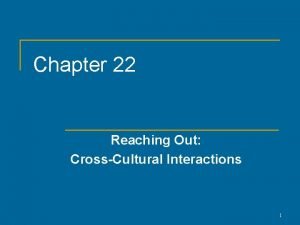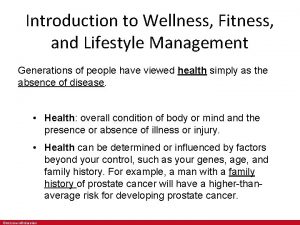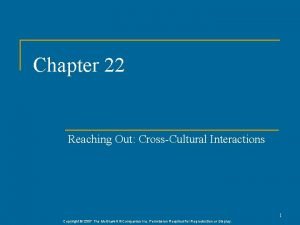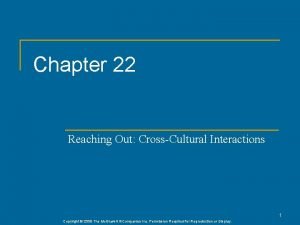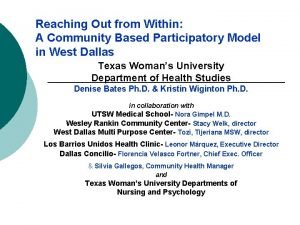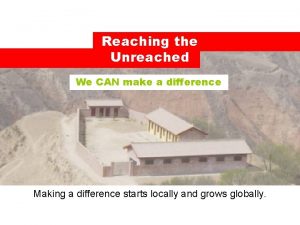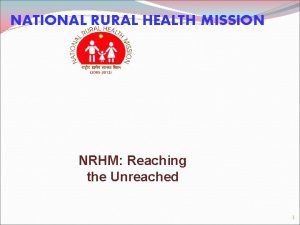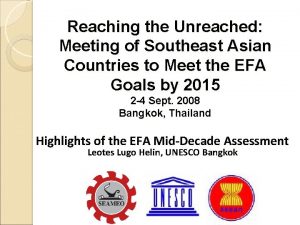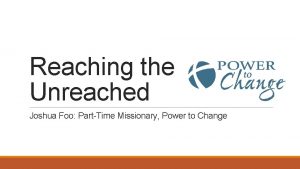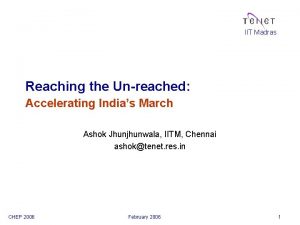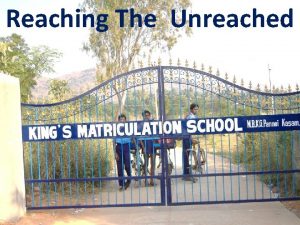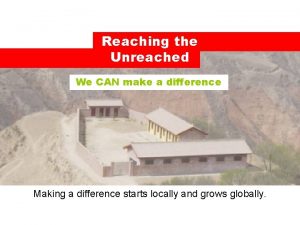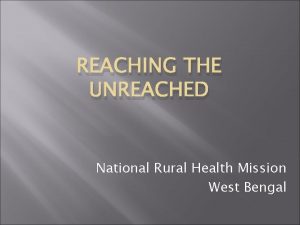Reaching the Unreached Expanding Access to HIVAIDS Services












- Slides: 12

Reaching the Unreached : Expanding Access to HIV/AIDS Services Bhopal July 4, 2010

Changing Face of HIV Epidemic Movement from … High risk groups to general population • Urban to rural areas • High prevalence states to all states • Feminization • High vulnerability of youth/ migrants •

Background • • • > 10 lac HIV positive people are yet to be reached, scattered in general population, underground Lack of access to information & services Inability to negotiate for safe practices Widespread stigma & discrimination in society Community unaware about its role in prevention & management of epidemic

Towards NACP & NRHM Convergence Major policy decisions taken: • Train ASHA, ASHA facilitators, ANM & LHVs on module “Shaping Our Lives” • Universal HIV screening of pregnant women through rapid blood test at VHNDs, HIV status disclosure only at ICTCs • All 24 x 7 facilities to provide ICTC & PPTCT services • Counselors under NACP program to also counsel non HIV pregnant women on nutrition, STIs, birth spacing • Incentive to service providers conducting institutional deliveries for WLHIV & support to C/ pregnant WLHIV for additional visit to health facility under JSY/ un-tide funds for VHSC • Assured access to STI services & cross referrals with HIV/TB programmes • Strengthening access to quality blood transfusion services/

Shaping Our Lives Companion for Field Level Workers For - ASHA, ANM, LHV, AWW & SHGs Providing information on how to prevent HIV infection Informing about ICTC for couples willing to take HIV test at nearest PHC/CHC Motivating family of PLHA to take ART treatment at nearest ART center in government hospital Counsel family on need for special diet & nutrition for PLHA Mobilize community leader on care & support for PLHA Informing adolescents & elders migrating for work on safe behavior

Contents 1. Learning about HIV/ AIDS and field workers role: Modes of HIV transmission, symptoms & stages of HIV/AIDS STIs and its management Prevention of HIV AIDS, Men’s role & responsibility in protection & prevention 2. Counselling and Testing, Treatment and child care: Pre & Post test counseling, integrated with maternal health & institutional delivery promotion for optimal benefits Helping the client with outcome results What is CD 4 count test? PPTCT & its prevention, role in PPTCT

contd… ART: - Difference in treatment of infants, children & adults Community care centers role ART not required for all HIV positive persons ART if discontinued, leads to resistance Prevention of HIV/ AIDS ART treatment is free in all ART centers Start treatment only after medical advice CD 4 test is only test to tell when to start treatment

contd… 3. 4. Gender Dimensions of HIV/AIDS: HIV & women empowerment issues HIV vulnerability of girls & women, how to address it Impact of trafficking & migration on women Vulnerability of even married women Rights of HIV positive person Interaction with community with role plays & story Fighting stigma & discrimination: Addressing stigmas & discrimination in village Disclosing positive status with spouse/partner Working with others to protect rights of W/CHIV, community mobilization

contd… 5. 6. Nutrition for PLHIV: Importance of good nutrition Nutritious diet Nutritional care for PLHIV: asymptomatic, pregnant women, infants & children, persons on ART, loss of appetite, diarrhea, mouth sore and oral thrush Fighting myths & misconceptions: HIV spreads through shaking hands, eating/ drinking together, working, sharing house/cloths, mosquito bites Blood donation may lead to HIV Safe for PLHA to have unprotected sex with another PLHA Caring for HIV/AIDs is risky Women should not ask for condoms, Sex with virgins may cure STI & HIV

Some Areas for Strengthening women & - Providing platforms to practice skills: VHNDs, community sensitization sessions, VHSC meetings Counseling universal HIV screening for pregnant women, people with STIs. Visit to STI clinics, ICTCs, PPTCT centers, CCCs, ART centers & DICs to have a experience on activities and approach to PLHIV A chapter on HIV and Males, and role of PRIs to address livelihood support, gender, stigma & discrimination, human right issues of children living with HIV. Provision for feedback from health facilities to ASHA on referrals made by her Reporting & monitoring system

Outcome - All pregnant women line listed for birth plan & counselled on nutrition, STI & HIV testing. All pregnant women screened for HIV, if positive, have access to ICT & PPTCT services All women have access to quality maternal care, STI services, safe blood transfusion services W/CLHIV supported for additional visits to health facilities Increased awareness on HIV/ AIDS prevention , care & support in unreached population Community taking lead to address lack of knowledge, livelihood, stigma & discrimination issues of women in general & PLHIV in particular

Thank You
 Terminal access controller access-control system
Terminal access controller access-control system Terminal access controller access-control system
Terminal access controller access-control system Reaching for the infinite heart
Reaching for the infinite heart Chapter 22 reaching out cross-cultural interactions
Chapter 22 reaching out cross-cultural interactions Introduction to wellness and fitness
Introduction to wellness and fitness Strategies for reaching global markets
Strategies for reaching global markets Chapter 22 reaching out cross-cultural interactions
Chapter 22 reaching out cross-cultural interactions Chapter 22 reaching out cross-cultural interactions
Chapter 22 reaching out cross-cultural interactions Salvation of hinduism
Salvation of hinduism Reaching out from within
Reaching out from within Forgetting those things which are behind nkjv
Forgetting those things which are behind nkjv Living beyond yourself
Living beyond yourself When i found the joy of reaching your heart
When i found the joy of reaching your heart



